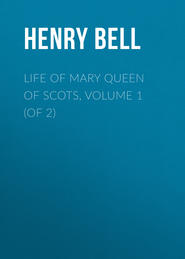По всем вопросам обращайтесь на: info@litportal.ru
(©) 2003-2024.
✖
Life of Mary Queen of Scots, Volume 2 (of 2)
Настройки чтения
Размер шрифта
Высота строк
Поля
62
Lesley in Anderson, vol. i. p. 23.
63
Keith, p. 368.
64
Laing’s remarks upon this subject, are exceedingly weak. He seems to suppose that Mary, for the mere sake of appearances, ought to have thrown into prison some of her most powerful nobility. He adds, – “If innocent, she must have suspected somebody, and the means of detection were evidently in her hands. The persons who provided or furnished the lodging, – the man to whom the house belonged, – the servants of the Queen, who were intrusted with the keys, – the King’s servants who had previously withdrawn, or were preserved, at his death, – her brother, Lord Robert, who had apprised him of his danger, were the first objects for suspicion or inquiry; and their evidence would have afforded the most ample detection.” Laing does not seem to be aware, that he is here suggesting the very steps which Mary actually took. She had not, indeed, herself examined witnesses, which would have been alike contrary to her general habits and her feelings at the time; but she had ordered the legal authorities to assemble every day, till they ascertained all the facts which could be collected. Nor does Laing seem to remember, that Bothwell had it in his power to exercise over these legal authorities no inconsiderable control, and to prevail upon them, as he in truth did, to garble and conceal several circumstances of importance which came out.
65
Killigrew, the English ambassador, sent by Elizabeth to offer her condolence, mentions, that he “found the Queen’s Majesty in a dark chamber so as he could not see her face, but by her words she seemed very doleful.” – Chalmers, vol. ii. p. 209.
66
Chalmers, vol. i. p. 208.
67
Vide these Letters in Anderson, vol. i. p. 40, or Keith, p. 369.
68
Anderson, vol. i. p. 50.
69
Goodall, vol. i. p. 346, et seq.
70
Chalmers, vol. i. p. 209. The above fact is no proof, as Chalmers alleges, that Murray was connected with the conspirators; but it shows, that whatever his own suspicions or belief were, he did not choose to discountenance Bothwell. Could Mary ever suppose that the godly Earl of Murray would entertain a murderer at his table?
71
Anderson, vol. i. p. 52.
72
Robertson – Appendix to vol. i. No. XIX.
73
Anderson, vol. ii. p. 103.
74
Anderson, vol. ii. p. 104, et seq. – and Keith, p. 375, et seq.
75
Anderson, vol. ii. p. 157.
76
Anderson, vol. i. p. 107; and Keith, p. 381.
77
Keith, p. 382. – There are extant two lists of the names of the subscribers, and these differ in one or two particulars from each other; but the one was only a list given to Cecil from memory by John Reid, Buchanan’s clerk; the other is a document authenticated by the subscription of Sir James Balfour, who was at the time Clerk of Register and Privy Council. The chief difference between these two copies is, that Reid’s list contains the name of the Earl of Murray, though on the 20th of April he was out of the realm of Scotland. It has been supposed that the bond, though not produced, might have been drawn up some time before, and that Murray put his name to it before going away. This is possible, but, considering Murray’s cautious character, not probable. The point does not seem one of great importance, though by those who are anxious to make out a case against Murray rather than against Bothwell, it is deemed necessary to insist upon it at length. Perhaps Bothwell forged Murray’s signature, to give his bond greater weight both with the nobles and with the Queen; although one name more or less could not make much difference either to her or them.
78
Keith, p. 390.
79
Keith, p. 383. – Melville’s Memoirs, p. 177. – Whittaker, vol. iii. p. 106 and 356.
80
Melville, p. 177.
81
Keith, p. 390.
82
Anderson, vol. i. p. 97. – Keith, p. 390.
83
Melville, p. 197.
84
Anderson, vol. i. p. 95.
85
Anderson, vol. i. p. 95.
86
Anderson, vol. i. p. 97. et seq. There is something so peculiar in the last passage quoted above, and Bothwell’s conduct was so despotic, during the whole of the time he had Mary’s person at his disposal, that Whittaker’s supposition seems by no means unlikely, that the force to which Mary alludes was of the most culpable and desperate kind. “Throughout the whole of the Queen’s own account of these transactions,” he observes, “the delicacy of the lady, and the prudence of the wife, are in a continual struggle with facts, – willing to lay open the whole for her own vindication, yet unable to do it for her own sake and her husband’s, and yet doing it in effect.” Vide Whittaker, vol. iii. p. 112. et seq. – Melville is still more explicit upon the subject, p. 177. And in a letter from “the Lords of Scotland,” written to the English ambassador, six weeks after the ravishment, it is expressly said, that “the Queen was led captive, and by fear, force, and (as by many conjectures may be well suspected) other extraordinary and more unlawful means, compelled to become the bedfellow to another wife’s husband.” – See the letter in Keith p. 418.






